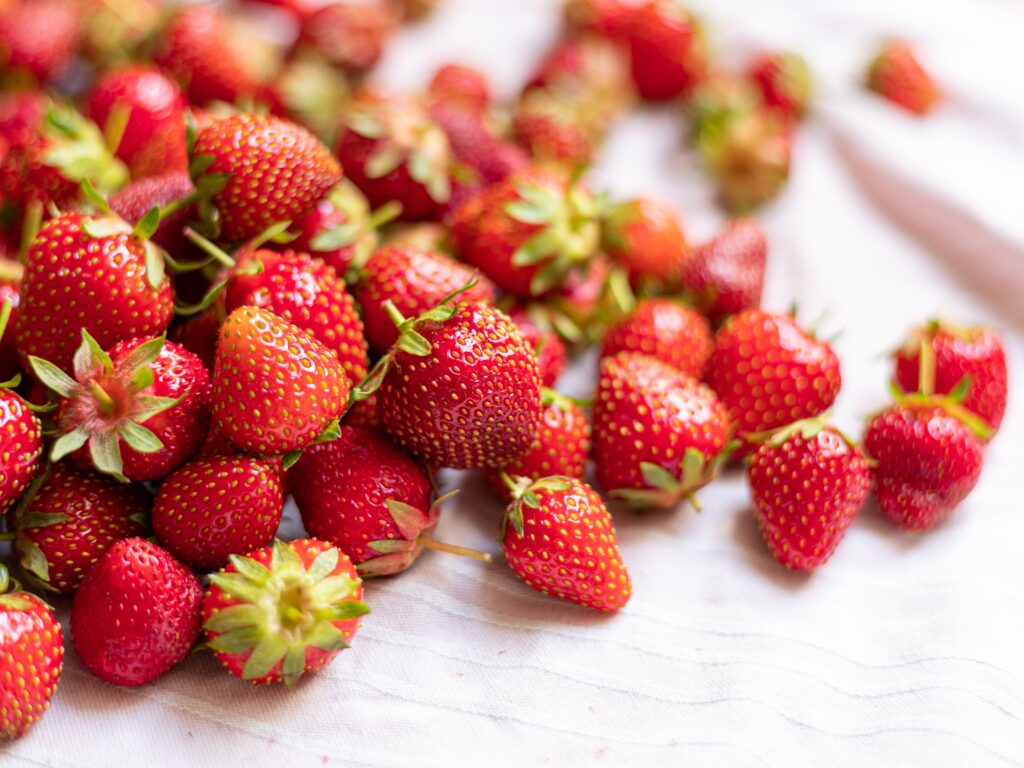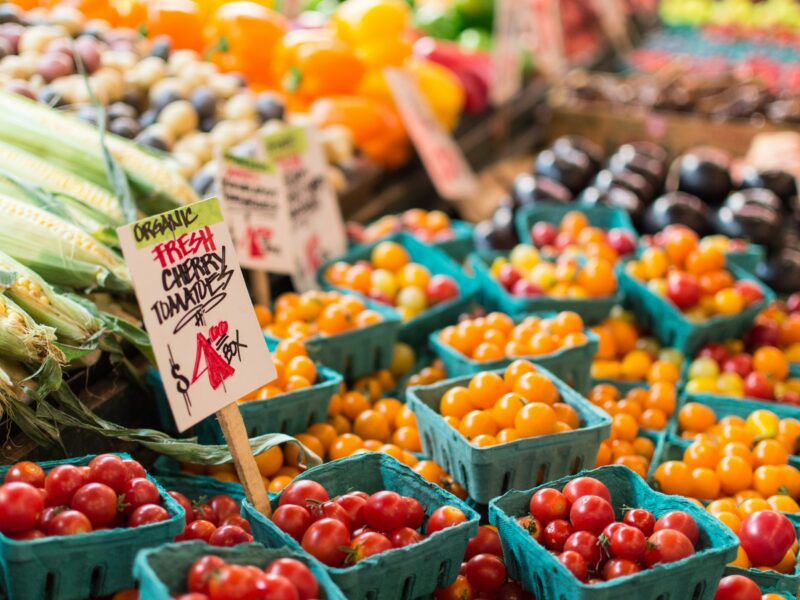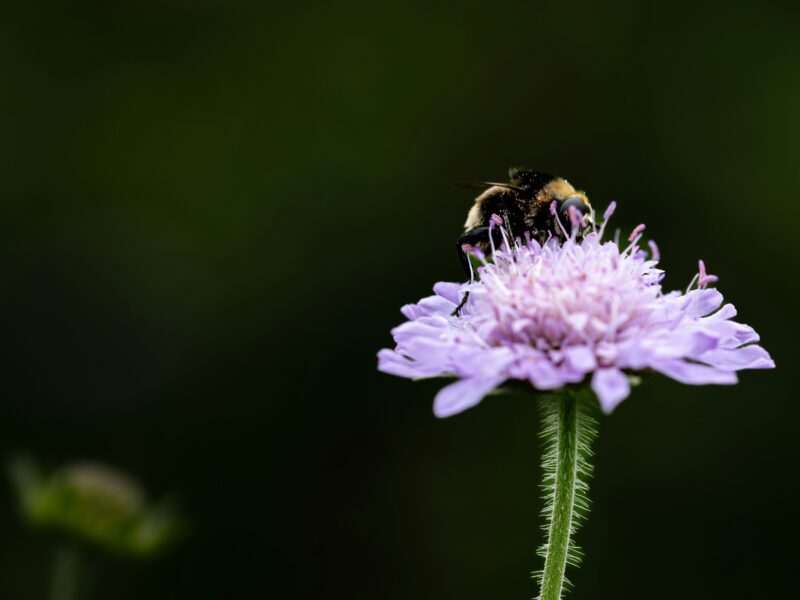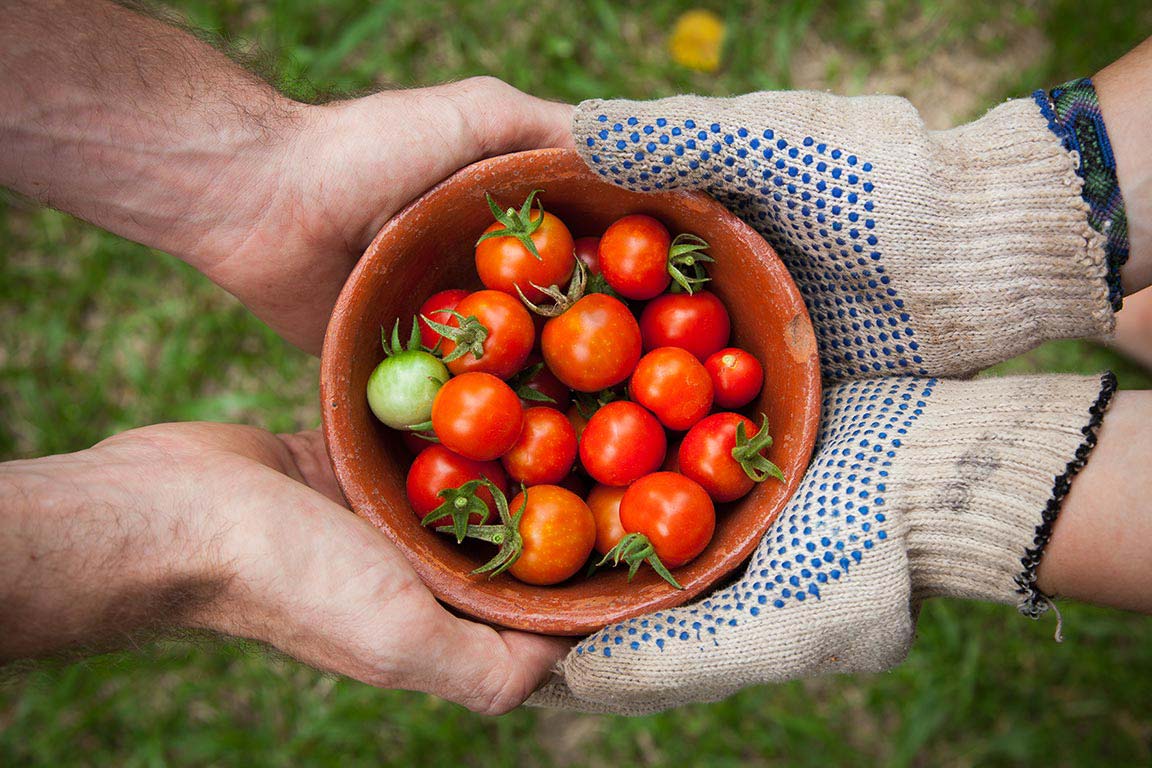Berries are beloved by kids, and when they’re not chemically produced, they’re coveted for their nutrients and antioxidants. And now that it’s berry season, we cannot wait to dig into a juicy berry dessert.
But what kind of fruit are you using, and just how important is it to buy your berries organic?
The answer is, if you want to avoid pesticide residue on your berries, it’s best to choose organic, according to the data we have on three of the most widely consumed berries in the U.S.
For the Environmental Working Group’s 2023 Shopper’s Guide to Pesticides in Produce™, researchers analyzed results from Department of Agriculture tests of 46,569 samples of 46 fruits and vegetables. Each year, a rotating list of produce is tested by USDA staffers for 251 different pesticides. A total of 210 pesticides were found on the 12 crops with the most pesticide residues – EWG’s Dirty Dozen™.
When the USDA’s Pesticide Data Program, or PDP, releases its annual list of produce samples with residues that exceed tolerance levels set by USDA, strawberries appear more often than any other fruit or vegetable – in 2022, they were first on the list. Blueberries were 11th this year. Raspberries didn’t make the top 12, but they still have a large amount of pesticide residue.
Since they tend to be so high in pesticide residues, many consumers believe they can just wash off the chemicals. But the USDA tests the produce after it’s been washed, peeled, or scrubbed as consumers do at home. Pesticides cannot just be washed off. And the chemicals used in our farmland to grow these crops don’t just go away, either.
Why eat organic strawberries
The average American eats about eight pounds of fresh strawberries a year. More than 90% of strawberry samples in EWG’s analysis contained residues of two or more pesticides, and many showed 18 different pesticides. On average, 300 pounds of pesticides are applied to every acre of strawberries, compared to an average of 25 pounds per acre for other foods.
The USDA’s strawberry tests found that:
- Almost all samples – 99% – had detectable residues of at least one pesticide.
- About 30% had residues of 10 or more pesticides.
- The dirtiest strawberry sample had residues of 22 different pesticides and breakdown products.
- Strawberry samples contained residues of 81 different pesticides in various combinations.
Many of these chemicals are linked to cancer, reproductive and developmental damage, hormone disruption, and neurological problems. Carbendazim was detected in 16% of strawberry samples. It’s a hormone-disrupting fungicide that damages the male reproductive system and has been banned by the European Union because of safety concerns.
Exposure to a variety of foods without pesticides is especially important during pregnancy and throughout childhood, experts say. Developing children need combined nutrients. And they’re harder hit by contaminants such as pesticides. “Pesticide exposure during pregnancy may lead to an increased risk of birth defects, low birth weight, and fetal death,” the American Academy of Pediatrics noted. “Exposure in childhood has been linked to attention and learning problems, as well as cancer.”
Why eat organic blueberries?
Blueberries are another type of berry with a high level of pesticide residue – concerning amounts in nearly 90% of samples in the data EWG analyzed – because the thin skin allows the chemicals to enter the fruit’s flesh.
Conventional blueberries contain residue of 52 pesticide chemicals, and the chemicals of concern seem to be increasing. When they were tested in 2014, blueberries contained over 50 different pesticide residues. Tests in 2020 and 2021 found 54 different pesticides.
Two insecticides, phosmet, and malathion, were found on nearly 10% of blueberry samples. One, malathion, is considered highly toxic to insects, fish, and crustaceans. International health officials have said the chemical probably causes cancer in humans. Malathion interferes with the normal function of the nervous system. Since it controls many other organs, it can affect many other organs and functions indirectly. Exposure to high amounts of malathion in the air, water, or food may cause difficulty breathing, chest tightness, vomiting, cramps, and even death.
Why eat organic raspberries?
Raspberries are a favorite finger food of many toddlers and small children, so it makes sense to be cautious about selecting non-organically grown raspberries. Raspberries didn’t make the Dirty Dozen, but their thin skins make them extremely vulnerable to chemical absorption.
Raspberries trump strawberries with the application of 39 chemicals: 58% of the raspberries tested were positive for contamination. Their fuzzy exterior makes it difficult to wash off most of the 39 pesticides used and as we have mentioned, pesticides are systemic meaning they cannot be fully washed off. Organic raspberries are a healthy addition to the diet because they are high in fiber and vitamins
Organic farmers cannot use toxic persistent pesticides, fungicides, or synthetic fertilizers. So when it comes to these berries, splurge on organic strawberries, blueberries, and raspberries. You can use this Organic Berry Map from the Cornucopia Institute to locate local organic berries in your area. And get inspired with our roundup of recipes for delicious organic berry dishes.
When you choose certified organic berries, you’re investing in your health and the health of the environment.









